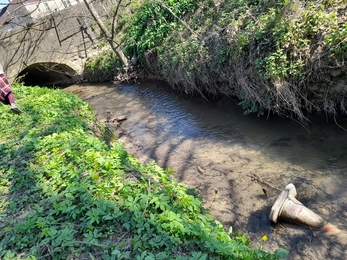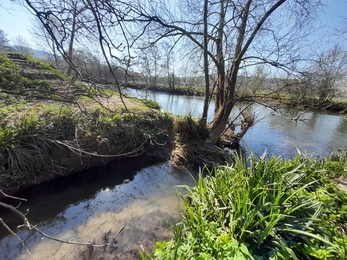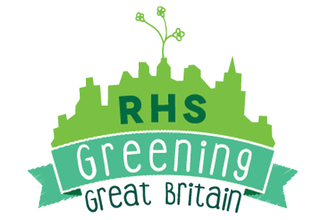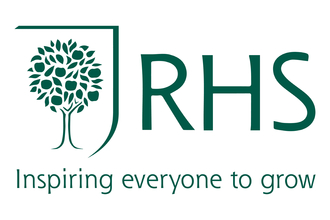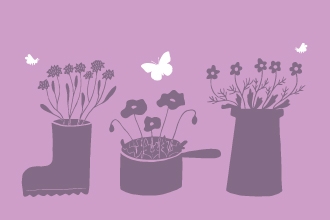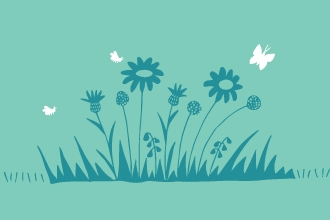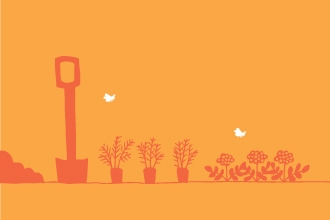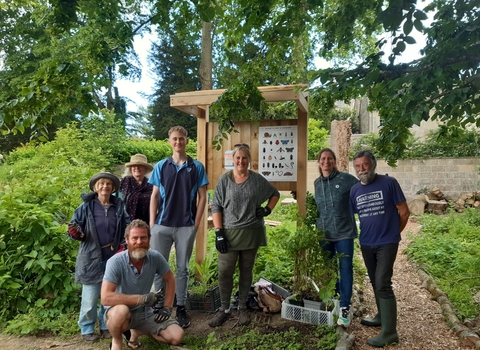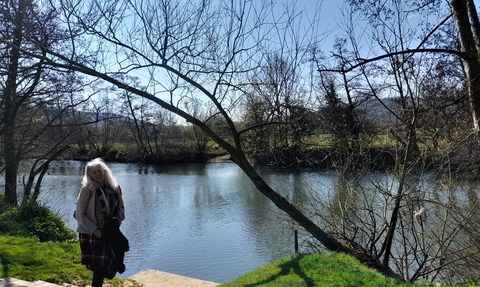
Sophie Bancroft
Tales from our Riverbank: Co- existence in the River Avon
Co-existence River Project in Batheaston
Alison is a talented artist and environmentalist based in Batheaston. She cares deeply for the natural world around her and is working with local people and organisations to make a difference.
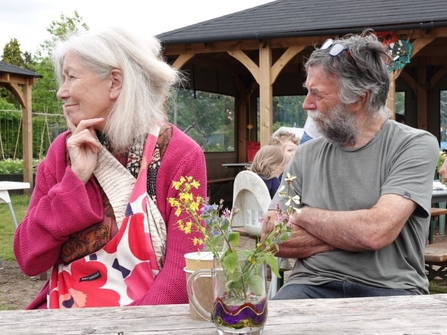
Alison & Steve, Grow Batheaston
The Co-existence event has been put together by local charity Grow Batheaston, who have come together to focus on the health of the nearby River Avon. River themed events are taking place locally to raise awareness of the river, its ecology, the different species that live on or near the river and the beauty and importance of this blue space.
Events are inclusive and offer a variety of engagement from a school art project, a stream clean, a documentary and celebration event, thereby creating a network of people coming together to help protect the future of rivers and freshwater wildlife through creativity, celebration and information sharing.
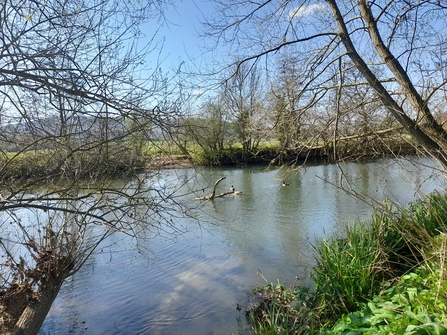
Sophie Bancroft
Organised and strategic connections
The Tales from our Riverbank project includes not only Grow Batheaston, but also local parish councillors, local residents and artists, Batheaston Primary School, BANES Council, a biologist and film-maker, amongst others.
The strength of the community increases when connections are made with other organisations with the same aims and values. This river project is part of the Wild Waters River Festival and the Festival of Nature to share publicity, information and resources. Alison is also part of Avon Wildlife Trusts’s Wildlife Champions Programme, which creates networks of support within the community to help take action for nature, however that looks in their community.
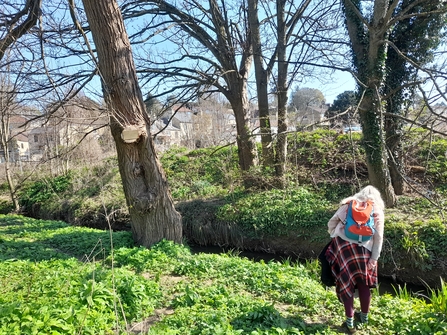
Sophie Bancroft
Connection with and love for the local river
The co-existence river project "highlights the necessity of allowing ALL species to thrive - even the ones that are not visible to the naked eye. It focuses on the health of the river - how we can nurture it and allow it to thrive, providing a home and a habitat for many different forms of life.
We are looking more closely at what actually lives IN the river - what calls the river home - not only for the kingfishers, the beavers and the otters but also the microscopic life perhaps at the bottom of the food chain, forms of life that, when studied, are sensitive enough to ‘shift’ their behaviour in response to pollution.
Do we need to change the way we co-exist with the river and the natural world?
How has human activity impacted the river, and how can we alleviate the impact of climate change, sewage, road runoff, agricultural and chemical pollution?
Is it time for the river to have rights of its own?” Alison Harper
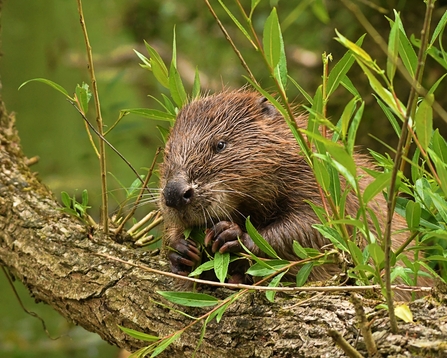
Sam Alexander Photography
Why focus on beavers?
The event aims to inspire people to take action for nature, to reflect on their way of life and to garden and live in a sustainable and wildlife friendly way. It was thrilling to discover that ‘wild’ beavers had returned to the Avon after approximately 400 years! These charismatic creatures were hunted to extinction in the UK, but thanks to a number of reintroductions they have been settling in a number of locations, including around Bath.
Beavers are cute and relatable, and are a good species to attract attention! While some people see them as destructive, they are a keystone species that provides habitat for many other species, as well as storing and cleaning water. We can learn a lot from beavers to help ease the effects of flooding and drought caused by climate change.
Species re-introductions are much more successful when managed professionally so that people learn to live in harmony with any changes. Beavers bring benefits to local wildlife and habitats and river management, as well as making a huge potential contribution to alleviate the effects of climate change.
2025 saw the government announce support for the licensed reintroduction of beavers into the wild in the Uk. As there are already populations of beavers in Bath no reintroductions are required, yet support for beavers is still required to manage any conflicts with people, agriculture and infrastructure.
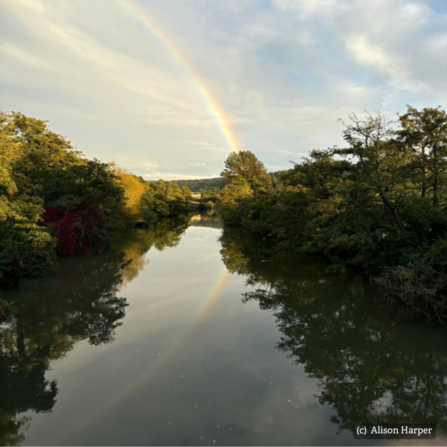
Alison Harper
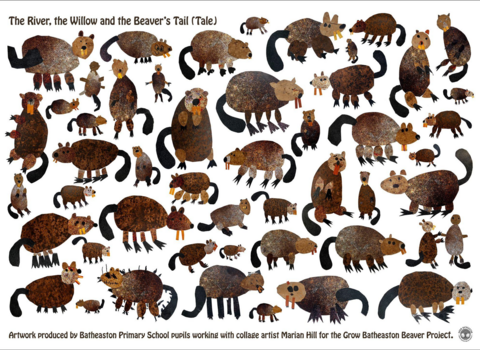
Marian Hill
Co-existence river project engaging with local people
Engagement and connection with the local community is key to encouraging people to care for and protect the river. Grow Batheaston encourages sustainable food growing and gardening as well as promoting wildlife friendly practices generally. Grow Batheaston has held various events to appeal to various sections of the community, some of which are listed below:
- Forest gardening, meadowfest, wildlife clubs, community tree planting, football clubs and markets.
- Art projects and art trails.
- School workshop engagement.
- The co-existence river project includes talks, celebrations, film, art and practical river cleaning and litter picking.
Instead of telling people to change, these events bring people together and provide opportunities to connect with nature, raise awareness of well-being benefits, celebrating the beauty and pride of the area and inspire action to help protect the rivers ecology.
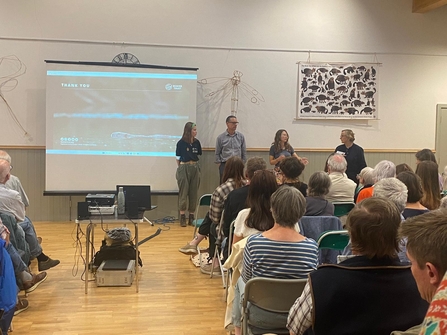
Emma Fennell Hodson
Encouraging community engagement
An annual Art Trail takes place, there is a Forest Garden with regular work sessions, fruit and nut trees have been planted on green areas and there are several WhatsApp groups including a wildlife group and a well supported growers group. A local children’s football session takes place every week and there were several local markets just after lockdown.
Grow Batheaston has organised art and nature projects in Batheaston Primary School as well as connecting with the Green House education project which has a new home in the Youth Club, including planting medicinal herbs in the Forest Garden.
There is a stream clean as well as the Tales from our Riverbank event which includes talks, films and artwork.
A new set of ceramic tiles has been installed on the National Trust Bathampton Meadows land near the river as an off shoot of the schools project - children worked with the amazing collage artist Marian Hill.
These events help to bring people together, providing opportunities to connect with the outdoors in various ways and raising awareness of well-being benefits, whilst celebrating the beauty of the area and inspiring action to protect the ecology of the river.
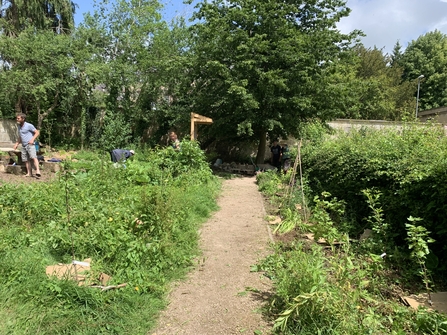
Grow Batheaston
Community strength increases when people come together to connect about shared interests and concerns. Community power makes actions and change more likely to happen. The co-existence river project and Grow Batheaston have listened to local people to address what is needed locally to benefit both people and wildlife. They have challenged what's available and come together to share stories, knowledge, resources and creativity.
Last event success. The previous beaver event was a huge success and really showed how beavers can engage people. The sold out event (150 people) had speakers from Avon Wildlife Trust, the Beaver Trust, Surfers Against Sewage, Bevis Watts author of River Journey and amazing illustrations by local artists, including Marian Hill and Julie Starks. Stunning wildlife films by the award-winning Aleks Domanski were also shown. the success and popularity of this event showed that local people were keen to get involved.
Aleks Domanski's inspirational films about wildlife on the local river captured the beauty, character and importance of wildlife in the area. He filmed the river in the early hours, on a canoe to capture this intimate and special view of the river. His amazing video footage showed the beavers doing their thing, which is very moving and inspirational to take much needed action.
Eco-anxiety is eased when people come together to take action and do something that makes a difference. Hope is created from engagement at these community events and actions.
How to spark creativity with children
Creativity and engagement is important for people of all ages. Marian Hill runs activities for both adults and children through Buzz and Scuttle, which focuses on the importance of insects, bugs and the tiny creatures that are essential to enable wildlife to flourish. Amazing mosaics are made, highlighted above.
Children are bursting with creativity, enthusiasm and intelligence when it comes to taking action for nature. Give them the right information and opportunities to learn and they will make a difference to protect the natural world now and in the future. Learning through creativity was carried out as part of the co-existence river project with activities in schools.
Julie Stark, a local artist, held willow activities in schools. Practical and educational workshops created willow structures to raise awareness of river ecology in a fun, insightful and memorable way. They also made fish or whales out of willow, also encouraging connections with nature. Pupils learned about the beauty and importance of willow, which is an important food for animals, including beavers.
ADVICE: Working with schools isn’t always easy! Grow Batheaston community events meant that engagement and connections with parents and teachers already existed.
Raising awareness of local river issues
The importance and need to protect the local river is strong. Through engagement, these issues are raised and addressed. People locally would have experienced changes and disruption because of the climate and the ecological emergencies. Living near to the river means that the following issues have happened and will continue to happen.
Local flooding – Alison has observed an increase in local flooding over the last few years. Batheaston was flooded at least five times in 2024. One example in November, 2024, pictured above and featured in SomersetLive. Storm Bert had devastating effects by causing flooding which trapped people, caused damage to homes, infrastructure, businesses and the local school was forced to close. Batheaston Church School closed for a day as sewage spilled onto the playground. It is understandable why this local school has welcomed and embraced education about beavers.
Climate change has caused an increase in extreme weather events.
Pollution in the river has increased over the last few years and is physically visible. Pollution in the River Avon is a mixture of plastic, litter and fly tipping, with traces of sewage and run off from nearby roads and agriculture. Pet treatments also effect the water quality. Not everything here can be controlled, but action is being taken by the co-existence river project.
Engagement events and actions taken by the co-existence river project tackle fears and issues head on. Through their talks, films and events they educate and empower local people about local river wildlife and ecology and raise awareness about actions that can be taken individually and together. From talks from vets about pet treatments, raising awareness through art and creativity, to practical events like river cleaning sessions, people are making a difference and standing up for nature, giving nature a voice and taking action to protect this beautiful, fragile environment.
Resources
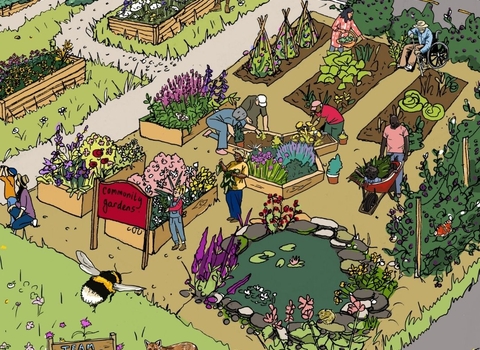
(C) Hannah Bunn
Be part of Team Wilder
All actions for nature collectively add up and creates life for people and wildlife.
Share your actions for nature, like Tom by sharing and tagging @avonwt on social media and
Log your actions for nature on the map




